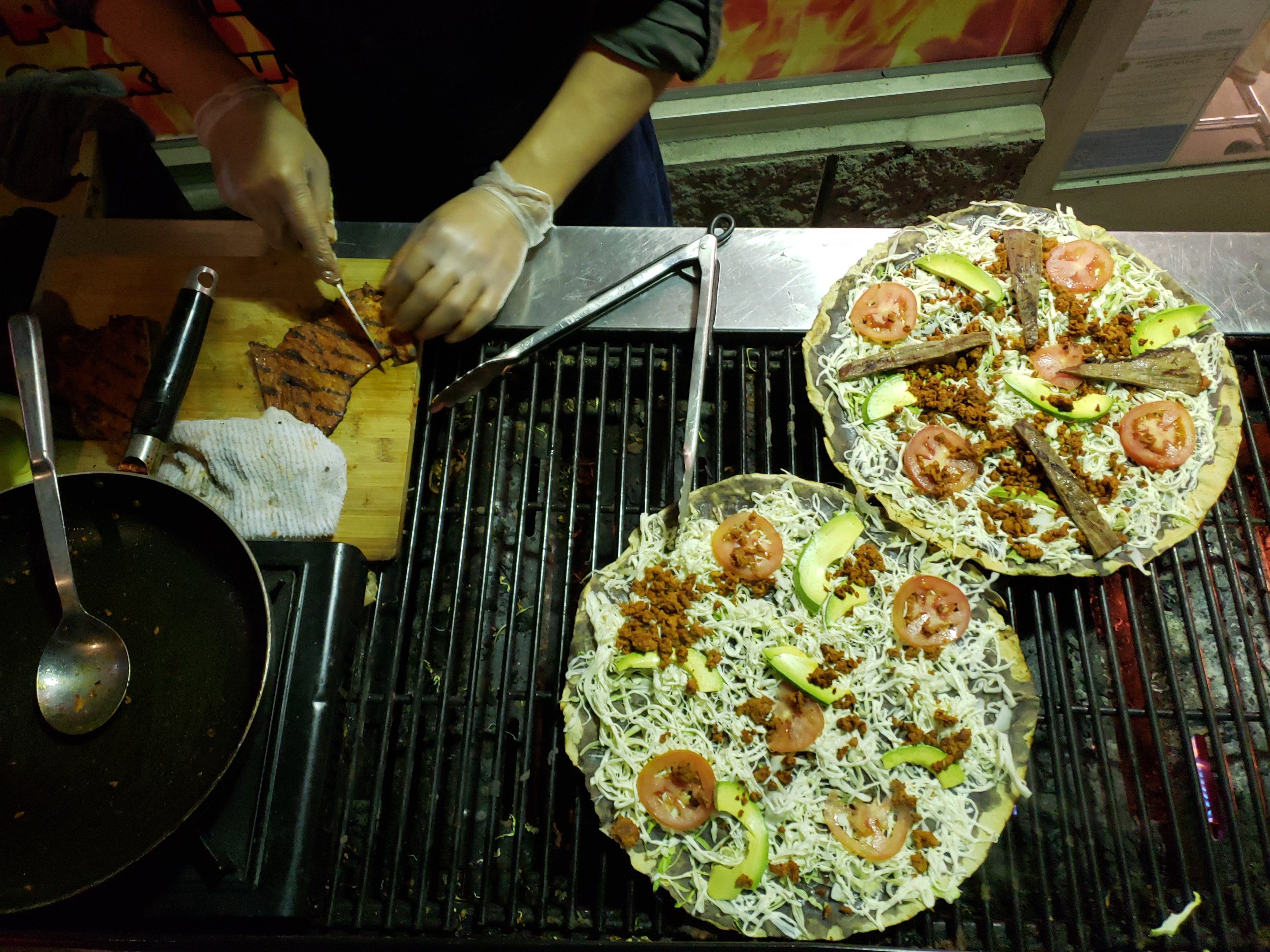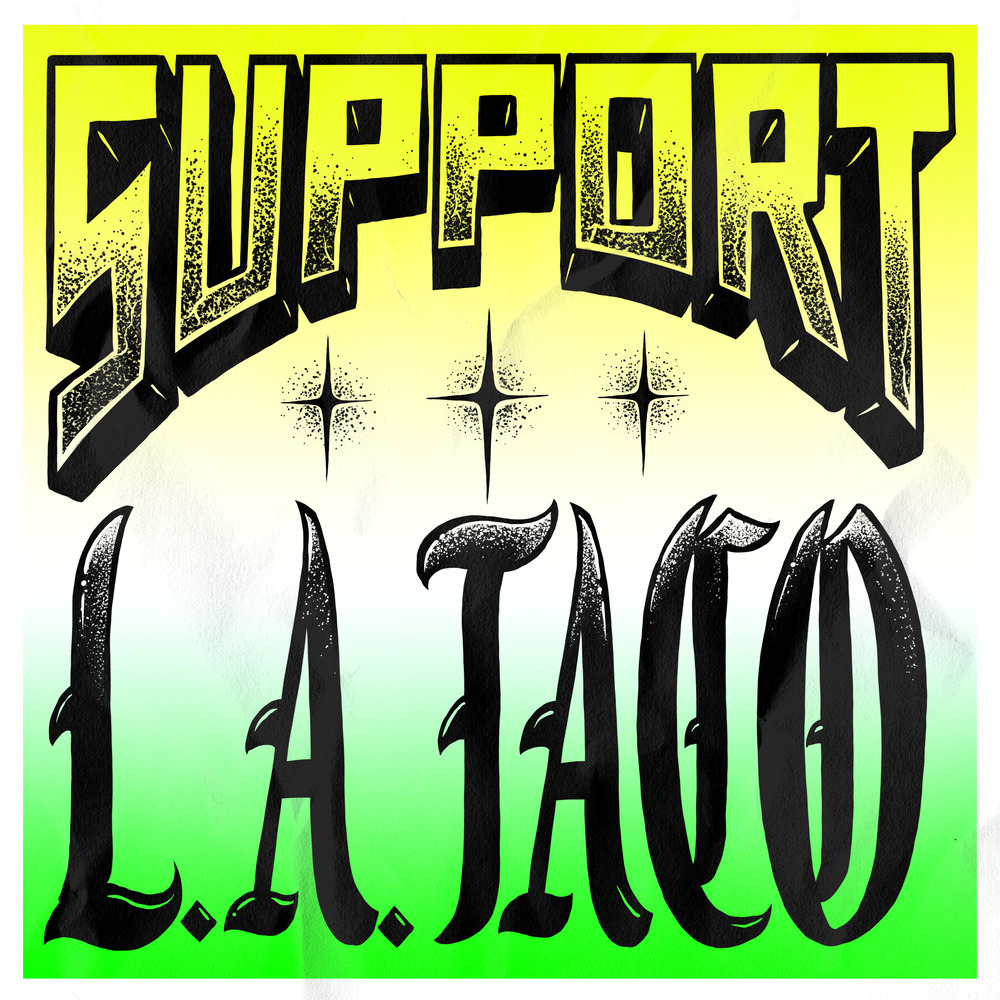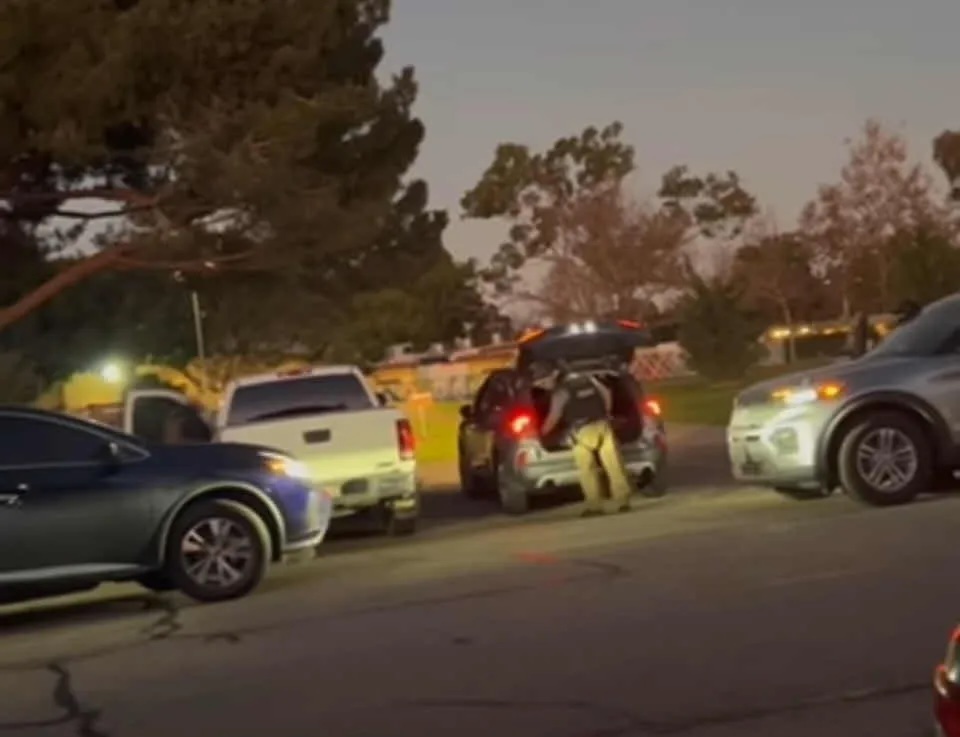[dropcap size=big]T[/dropcap]hree nights a week, Filemon Daniel Vasquez steps out onto Santa Monica Boulevard to spread the gospel of tlayudas to West Los Angeles. You’ll find him Tuesday, Thursday and Friday evenings in front of La Flama, the Oaxacan carnicería and market he’s partnered with for the business they are calling Tlayudas La Flama.
We’ve tried every tlayuda in this neighborhood at one point or another, from sit-down restaurants to food trucks, and find none comparable to the immediacy, structure, and flavor of those at Tlayudas La Flama. Multi-textured and bold, sometimes the multiple ingredients join together in one balanced bite, yielding a microcosm of the Mexican flavor universe.
More often, the ingredients mix and mingle, forming miniature pairings of textures and flavors in infinite and delightful combinations. You might get a mouthful of chorizo wrapped in a webbing of salty, melted quesillo, the flavors and feels merging like queso fundido. The next nibble may be notable for a congruent clash of creamy avocado and fierce salsa complimenting a tender mouthful of tasajo.
The combinations feel infinite.
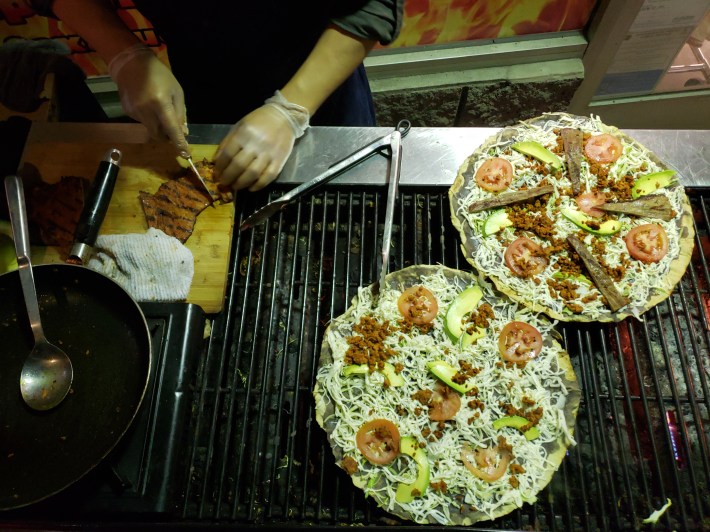
Placing a crisp, blue tlayuda over the black grates of his gas grill, Vasquez smears its round countenance in asiento and black beans — made “just like my mama made them,” he says — before decorating the entire surface in a pinwheel of three different Oaxacan meats and shredded quesillo, commingled with avocado crescents and tomato wheels.
Before handing this cecina, tasajo and chorizo-topped tlayuda mixta over, he crisscrosses its perimeters with two salsas — a guajillo-and-chile de arbol-based rojo made from guajillo and a thin avocado salsa — both infused with maguey worms for a “little extra kick.”
“I’m from Oaxaca,” Vasquez says of this last ingredient. “I have some tricks.”
RELATED: Poncho's Tlayudas Makes Its Public Food-Scene Debut Sunday at Smorgasburg
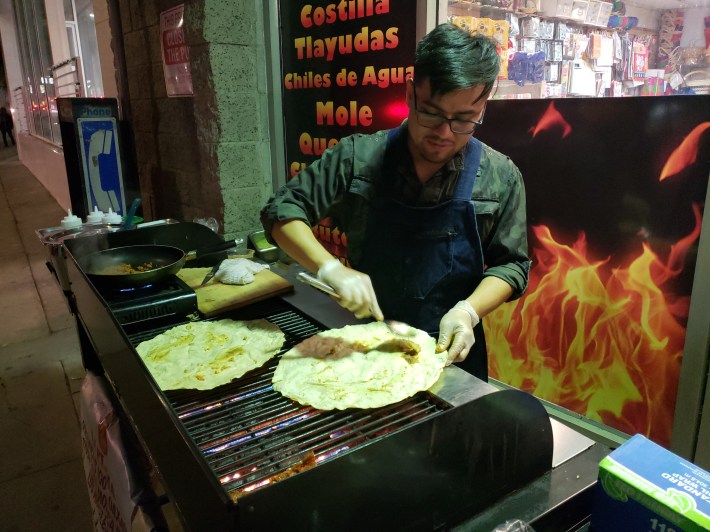
[dropcap size=big]F[/dropcap]or locals in this Sawtelle neighborhood, occasionally described with the diminutive “Little Oaxaca” for its concentration of restaurants, markets and nationals from the central Mexican state — part of a larger Westside Oaxacan demographic stretching south to Mar Vista and Culver City — Vazquez’s thoughtfully constructed tlayudas offer a concentrated taste from back home.
For Westsiders eager to try something like South Central’s much raved about Poncho’s Tlayudas stand, who can’t conceive of stomaching the traffic slog come Friday night, they provide an opportunity to try tlayudas from another dedicated chef choosing to put his singular focus on this Oaxacan staple.
Born in Oaxaca City, Vasquez’s memories are rich with trips to the zócalo, where he’d sample among the many charcoal-grilled tlayudas offered with a menagerie of meats and salsas. At home, the giant tortillas would be consumed unadorned.
“We eat tlayudas every day in Oaxaca,” he says. “It’s one of our favorite dishes.”
The tlayudas themselves are imported from Oaxaca and come in three colors.
When Vasquez moved to the States some fourteen years ago, he wasn’t much of a chef, starting “at the bottom” at the Santa Monica’s Airport’s now shuttered Japanese restaurant, Typhoon. A growing passion for the kitchen eventually lead to a position on the line. Later, he would open his own business dealing in Oaxacan products.
“I started playing around with everything,” he tells us. “Tlayudas were one of the best things I was making and I thought, ‘This is good. Everybody’s going to like it.’”
Vasquez eventually linked up with La Flama, which recently vacated its long held Pico Boulevard address to occupy its new Santa Monica storefront, formerly a party store that also sold Oaxacan-style marinated meats and ingredients.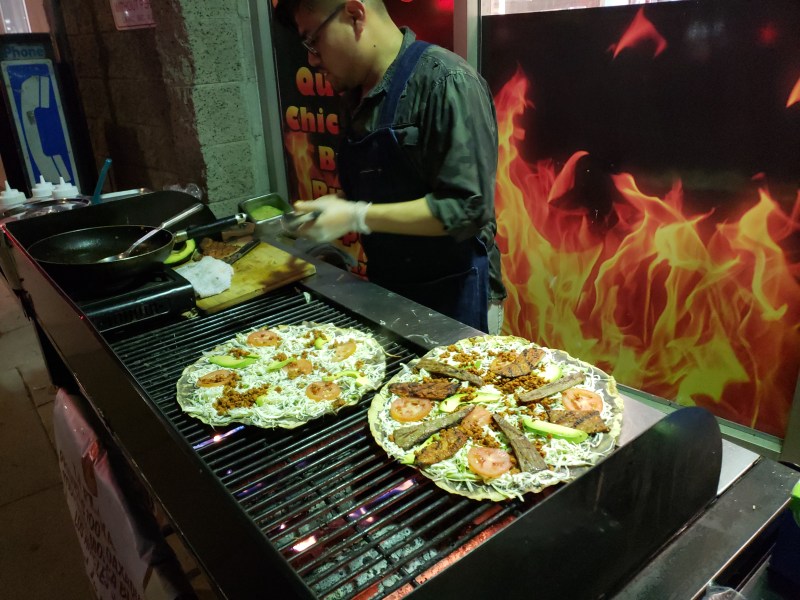
[dropcap size=big]I[/dropcap]mpressed by the quality of La Flama’s products, Vasquez partnered with the store and set up out front, hoping to share his cooking and educate people about proper tlayudas on a street better known for its late-night taco trucks.
The tlayudas themselves are imported from Oaxaca and come in three colors — white, yellow and blue, depending on the corn behind them. The asiento, pork lard recovered after making chicharron, is La Flama’s own recipe, providing a flavorful base to everything that tops it.
Vasquez prefers the open-faced style so the tlayuda doesn’t get soggy if taken home. Cabbage is available, but by no means a necessity if you don’t want your tlayuda weighed down by the roughage.
RELATED: Street Vendor Gets a Taste of Justice
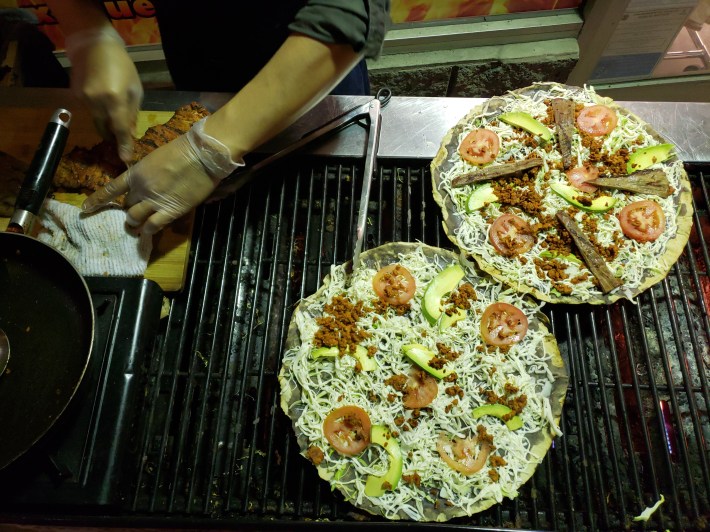
Tlayudas La Flama seems to be steadily gaining devotees. Vasquez notes that Oaxacans in the neighborhood are definitely coming back for more, though he’s still trying to entice neophytes who lack familiarity with his beloved antojito.
“There are a lot of white people on this street,” he notes. “And they don’t always want to take the risk to try it. They say, ‘What is that?’ It can be a little hard to explain. Even to pronounce ‘tlayuda’ is hard. So you know, we start calling it Oaxacan pizza, which is just an easy way to recognize it.”
Vasquez feels both pride and pointed responsibility when representing Oaxaca and its cooking, beaming as he recounts the state’s beauty. But he is more than up to the challenge of introducing people to their first taste of tlayuda.
“We want to be able to answer all questions about tlayuda,” Vasquez says. “My job is to tell them what it is and soon they’re going to know it by name. Everything takes time. They’re going to love it once they know it.”
Tlayudas La Flama, ~6pm Tues./Thurs./Fri. ~ 11957 Santa Monica Blvd, Los Angeles, 90025
